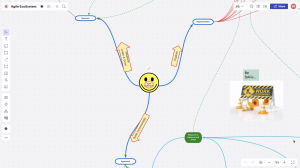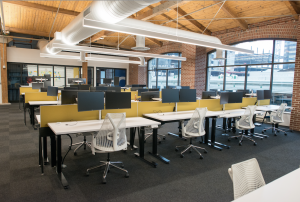Anticipating what the future of work looks like can be frustrating, particularly for IT departments tasked with the mandate of modernizing technology so that business can run at top speed and employees are well supported. Almost three years into the global pandemic, after countless predictions, we may as well assume that hybrid work is here to stay. Already we’re seeing companies setting a partial return to the office.
Treating employees fairly and equitably – regardless of whether they are in the office or remote – is critical to a successful hybrid environment, especially in light of the Great Resignation. Palo Alto Networks launched FLEXWORK in early 2020 to provide an employee-centric and inclusive work environment by empowering employees to choose where, when, and how they work. But what does inclusivity really mean for a hybrid workforce?
It’s more than just ensuring employees feel included and connected while in the office. It’s about providing collaboration equity. That means leveraging the right tools and technologies to help make sure remote employees feel connected with their in-office colleagues.
As companies rely on their IT department to vet and deploy the best technologies for their work culture, I want to recommend five key areas to focus on, along with some popular vendors in those areas, that can help enhance employee experience.
1. Advanced Conference Room AI Functions
With tech in auto-framing, individual participant framing, campfire, and immersive views quickly advancing, finding the right fit for your company could get tough. One of the most common complaints from employees working remotely is not feeling connected to their team members who are in the office while on Zoom calls. Technology that breaks up the conference room into tiles (see photo below) in Zoom allows for remote employees to feel more connected.

Some of the vendors that provide this technology include:
2. Whiteboarding Apps
Whiteboarding apps provide employees the ability to brainstorm using a digital canvas. This allows all employees – whether remote or in the office – to participate in writing on a whiteboard as if they were together. Using a digital stylus provides a better experience when using these solutions. This also allows remote employees to participate in discussions while on laptop or a tablet. The Logitech Scribe Whiteboard Camera allows for employees to use a standard office whiteboard and it projects to video conferencing solutions such as Zoom.

3. Collaborative Digital Whiteboards
This enables employees to share ideas, brainstorm, manage projects and much more from a single platform. While not all employees will need or benefit from this tool, many employees find it very helpful and productive when needing to share a more advanced whiteboarding solution.

4. Space Management
“Hot desking” and “hotel desking” is on everyone’s mind when considering a return to the office. As companies anticipate employees returning to the office in a lesser capacity, the ability to reserve a desk will play a big role in ensuring employees have a great experience. These solutions allow employees to quickly search for available desks, conference rooms and spaces to reserve prior to going to the office or while in the office.

5. Occupancy Sensors
Last, there’s occupancy sensors which provide insight into how employees are leveraging space (anonymously) and enable Facilities/Workplace Resources Teams to plan and optimize space for employee needs.
It’s About Creating a Leveling Field
Offering employees a more equitable experience by creating a leveling field for remote and in-office work affects productivity, talent retention, and ultimately, business outcome. Happy employees make for a happy company. Start with these five areas if you haven’t already and explore the technologies that will fit your needs. Keep things simple. Focusing on what we know works is more important than betting on technology that may or may not be here in the future.



